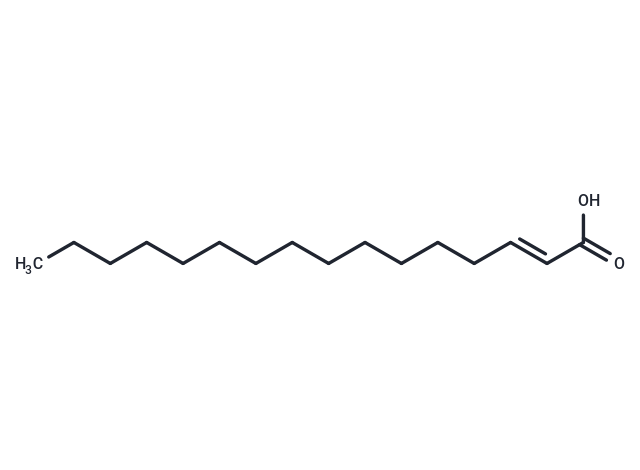- 全部删除
 您的购物车当前为空
您的购物车当前为空
Δ2-trans-Hexadecenoic Acid
Cismonoenoic acids form readily from unsaturated fatty acids in animal tissues, with palmitoleic acid (9-cis-hexadecenoic acid) deriving from palmitic acid. An intermediate, 1Δ2-trans-hexadecenoic acid, arises during the β-oxidation of palmitic acid. Furthermore, Δ2-trans-hexadecenoic acid, at a dose of 10 mg/kg, significantly reduces gastric juice secretion in pylorus-ligated rats, indicating potential for gastric ulceration simulation models.

Δ2-trans-Hexadecenoic Acid
Cismonoenoic acids form readily from unsaturated fatty acids in animal tissues, with palmitoleic acid (9-cis-hexadecenoic acid) deriving from palmitic acid. An intermediate, 1Δ2-trans-hexadecenoic acid, arises during the β-oxidation of palmitic acid. Furthermore, Δ2-trans-hexadecenoic acid, at a dose of 10 mg/kg, significantly reduces gastric juice secretion in pylorus-ligated rats, indicating potential for gastric ulceration simulation models.
| 规格 | 价格 | 库存 | 数量 |
|---|---|---|---|
| 10 mg | 待询 | 8-10周 | |
| 50 mg | 待询 | 8-10周 |
产品介绍
| 产品描述 | Cismonoenoic acids form readily from unsaturated fatty acids in animal tissues, with palmitoleic acid (9-cis-hexadecenoic acid) deriving from palmitic acid. An intermediate, 1Δ2-trans-hexadecenoic acid, arises during the β-oxidation of palmitic acid. Furthermore, Δ2-trans-hexadecenoic acid, at a dose of 10 mg/kg, significantly reduces gastric juice secretion in pylorus-ligated rats, indicating potential for gastric ulceration simulation models. |
| 分子量 | 254.4 |
| 分子式 | C16H30O2 |
| CAS No. | 929-79-3 |
| 存储 | Powder: -20°C for 3 years | In solvent: -80°C for 1 year | Shipping with blue ice. |





 还可以
还可以

评论内容